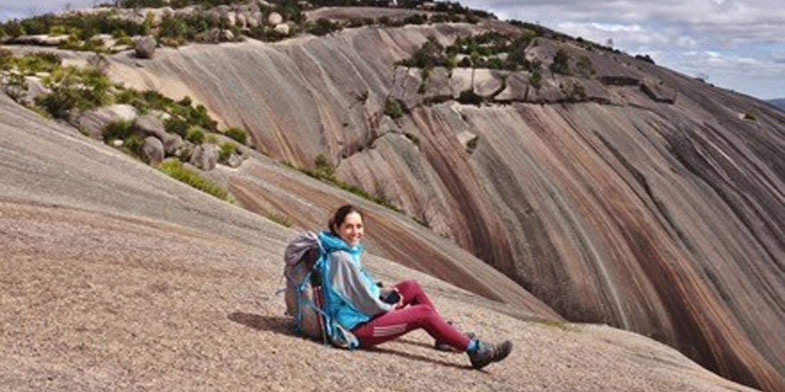We are pleased to announce that the recipient of this years’ award is Margarita Gil-Fernández for her project entitled Mycorrhizal Fungal Diversity Associated with Small Mammals in Response to Anthropogenic Disturbance.
Margarita has provided the following description of her work.
I received my Master of Research degree from Macquarie University where I am currently completing my PhD degree. I am interested in mammal ecology, from small mammals to big carnivores, including invasive species. I have experience in research planning, experimental design and implementation, as well as data collection, management and data analysis. To date, my research projects have primarily been field-based, including projects for small mammal trapping and monitoring, camera trapping, and forest health research.
Anthropogenic (e.g. agriculture and urbanisation) and natural (e.g. wildfires and insect outbreaks) disturbances are currently increasing. One of the main strategies plants employ to cope with these stress conditions is to form mutualistic associations with mycorrhizal fungi, which enable them to better acquire water and soil nutrient resources. The distribution of mycorrhizal fungi is tightly linked to animals, with rodents and several Australian marsupial species being the key dispersers of these fungi.
Therefore, the composition of small mammal communities could influence the make-up of mycorrhizae communities and in turn the composition and resilience of vegetation communities.
We aim to examine the relationship between anthropogenic disturbance and mycorrhizal fungal diversity associated with small mammal communities around Sydney, to help inform management strategies that will enhance forest resilience to disturbance as well as inform the conservation practices of native small mammal species.
The study will take place in Ku-ring-gai Chase National Park, which is bounded by urban development and hence is exposed to increased anthropogenic disturbances. We will trap small mammals at 10 sites in and around the park and scats of the captured mammals will be collected to assess mycorrhizal fungal diversity. We will then extract the DNA from the scat samples to identify mycorrhizal fungi species being dispersed by these mammals using genetic analyses known as next-generation sequencing barcoding. Our results will provide new insights into the impacts of anthropic environments on small native mammal communities and the mycorrhizal fungi they disperse, with implications for the management of native plant species that depend on these fungi.

